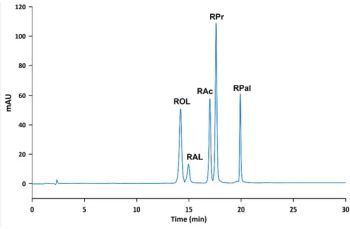Maternal risk factors and vitamin A deficiency among pregnant mothers in Mbeya region, Tanzania: A cross-sectional study
Abstract
Background
Vitamin A deficiency (VAD) among pregnant women is a public health concern and is widespread in developing countries.
Objective
The present study aimed to assess the prevalence of VAD and associated factors among pregnant women in the Mbeya region of Tanzania.
Methods
A cross-sectional study was conducted among 420 pregnant women in seven district councils in the Mbeya region of Tanzania. Serum retinol concentration was determined by high-performance liquid chromatography (HPLC). Assessment of anthropometric, food consumption and other socio-economic characteristics were performed and clinical information obtained on participants. A multivariate regression analysis was conducted to determine the independent predictors of VAD.
Results
46.1% suffered from any form of VAD and 9.8% from severe VAD. Those pregnant women who belonged to the lowest socioeconomic status, who were anaemic, and who consumed low dietary diversity scores were more likely to have any VAD (ARR = 2.84; 95% CI: 1.58, 5.12), (ARR = 1.73; CI: 1.03, 2.92) and (ARR=1.59; 95%CI: 1.01, 2.51), respectively. Any VAD was more likely among those who resided in Kyela district (largely rural) compared with Mbeya city (ARR = 0.32; 95%CI: 0.11, 0.92). Their marital status, occupation, and education levels were not statistically associated with VAD. Younger women were more likely to have severe VAD (ARR=0.29; 95%CI: 0.10, 0.84).
Conclusions
VAD among pregnant women in the Mbeya region of Tanzania is a mild public health concern according to the WHO’s categorization. Additionally, VAD was significantly associated with low socio-economic status, anaemia, and low maternal dietary diversity scores.

Authors retain all copyrights. In making a submission to World Nutrition, they are certifying that all material is theirs except quotations, as indicated, and that they have obtained permission for any photos, tables, or graphics taken from other publications or websites.




